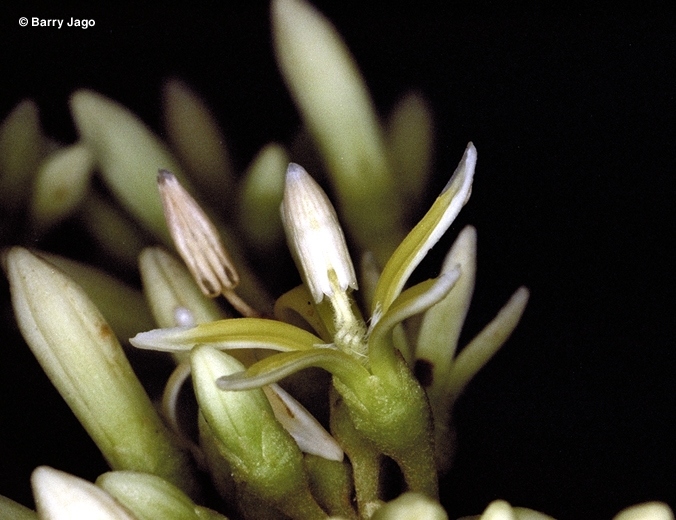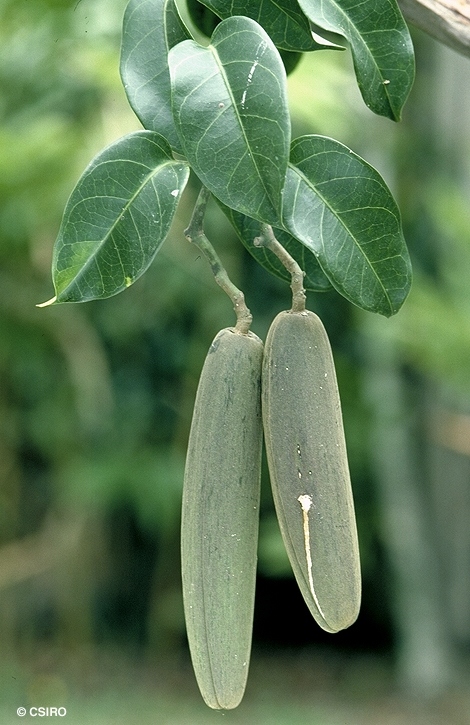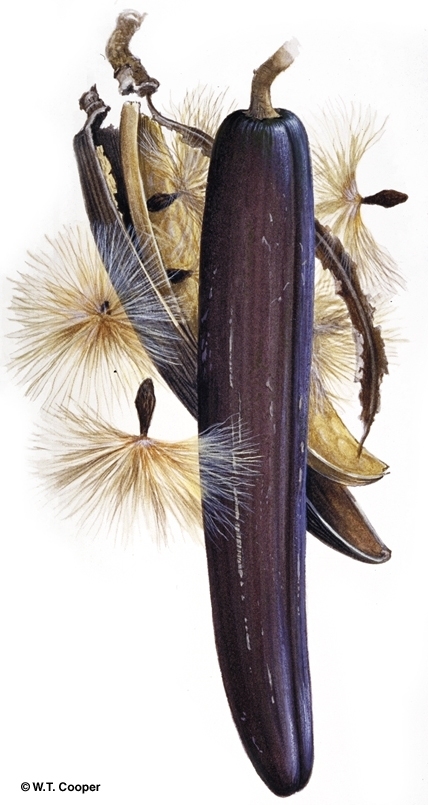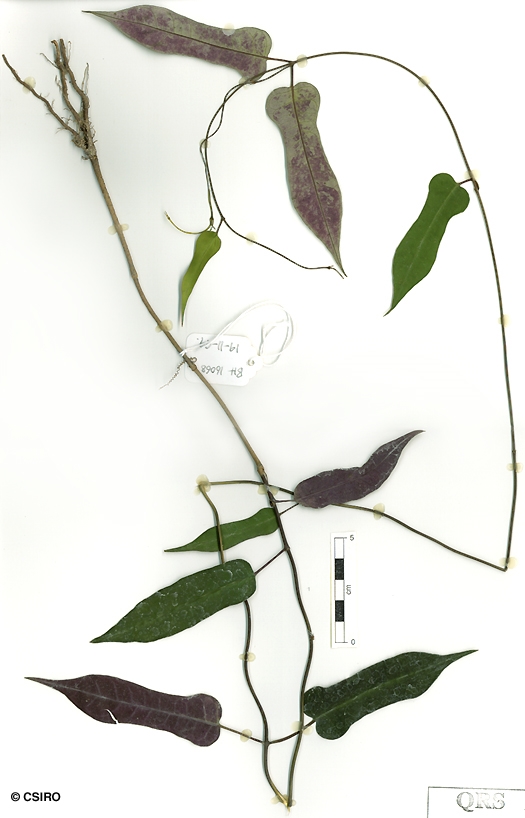Australian Tropical Rainforest Plants - Online edition
Parsonsia latifolia (Benth.) S.T.Blake







Blake, S.T. (1948) Proceedings of the Royal Society of Queensland 59: 167.
Silkpod, Milky; Green-leaved Silkpod; Milky Silkpod
Vine stem diameters to 9 cm recorded. Stem cross sections when viewed with a lens reveal short, sinuous, elongated segments of 'included bark'. Vessels +/- arranged in sinuous radical lines but the arrangement is not very obvious at times.
Leaves, twigs and petioles glabrous, producing a milky exudate when cut or broken. Leaf blades rather leathery, about 7-19 x 4.5-9 cm, petioles about 2-4.5 cm long. Some leaves may have a couple of sinuate lobes along the margin. Lateral veins forming fairly definite loops inside the blade margin. Scars resembling stipular scars are often visible on the twigs between the points of attachment of the petioles. Small finger-like glands often present on the scars.
Flowers white to cream, strongly but not pleasantly perfumed, about 13 mm diam. Calyx lobes about 1.5 mm long, outer surface clothed in hairs, finger-like glands on the inner surface close to the base. Corolla tube about 11 mm long, glabrous, lobes spreading and reflexed, about 7 mm long, clothed with long hairs on the inner surface close to the base. Anthers fused together to form a cone around the style. Anthers about 3.2 mm long, ventrifixed, filaments hairy, twisted, about 3 mm long, attached to the base of the corolla tube. Anther bases auriculate. Nectary (disk) glands about 0.8 mm long.
Fruits about 13-17 x 3 cm at maturity. Seeds about 1-1.5 x 0.4 cm, crowned with a tuft of hairs up to 4 cm long. Hairs often crimped. Surface of the testa irregularly ridged. Embryo about 8-9 mm long. Cotyledons about 5 mm long, wider than the radicle which is about 3 mm long.
Cotyledons elliptic to ovate, about 25-34 x 13-17 mm, purple on the underside, petiole about 2-3 mm long. First pair of leaves elliptic, ovate or lanceolate, about 4 x 1.5 cm, purple on the underside, apex acuminate, base cuneate. At the tenth leaf stage: plants twining, all plant parts produce a milky exudate. Leaf blade usually elliptic to narrowly elliptic, apex acuminate, base cordate to obtuse; midrib +/- flush with the upper surface, lower surface often purple. Lateral veins about 10-15 on each side of the midrib and forming loops inside the blade margin. Leaf blade often waisted about the middle with a rounded lobe on each side of the midrib at the base. Glands resembling small stipules present on the stems close to the junction with each petiole. Seed germination time 34 to 52 days.
The silky plumes are detached from the seed and used as nest linings by Lewin's Honeyeaters. Cooper & Cooper (1994).
Food plant for the larval stages of the Cairns Hamadryad and Common Crow Butterflies. Sankowsky & Neilsen (2000).





